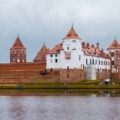India, known for its vibrant tapestry of cultures, traditions, and breathtaking landscapes, embodies a kaleidoscope of diversity. From the majestic Himalayas in the north to the serene backwaters of Kerala in the south, India encapsulates a rich heritage that spans millennia. Its bustling cities merge ancient history with modernity, offering a fusion of flavors, languages, and customs. Renowned for its spirituality, India hosts a multitude of religions, including Hinduism, Buddhism, Sikhism, Jainism, Islam, and Christianity, each contributing to the country’s colorful mosaic. With a population as diverse as its geography, India thrives on its unity in diversity, celebrating festivals, art, and a profound sense of community that resonates throughout this captivating land.
The Taj Mahal

The Taj Mahal, a UNESCO World Heritage site and one of the Seven Wonders of the World, stands as an iconic symbol of love and architectural splendor in Agra. This magnificent marble mausoleum was commissioned by the Mughal emperor Shah Jahan in memory of his beloved wife Mumtaz Mahal. Situated on the banks of the Yamuna River, the Taj Mahal mesmerizes visitors with its symmetrical beauty, intricate carvings, and the ethereal glow that transforms with the changing sunlight. To reach the Taj Mahal, visitors often travel to Agra, which is accessible by train from major cities like Delhi, Jaipur, and others. Agra also has a well-connected network of roads and is easily reachable by bus or private car. Once in Agra, local transportation such as auto-rickshaws, taxis, or cycle-rickshaws can take you to the Taj Mahal, allowing you to witness this architectural marvel that stands as a testament to eternal love and unparalleled craftsmanship.
Delhi
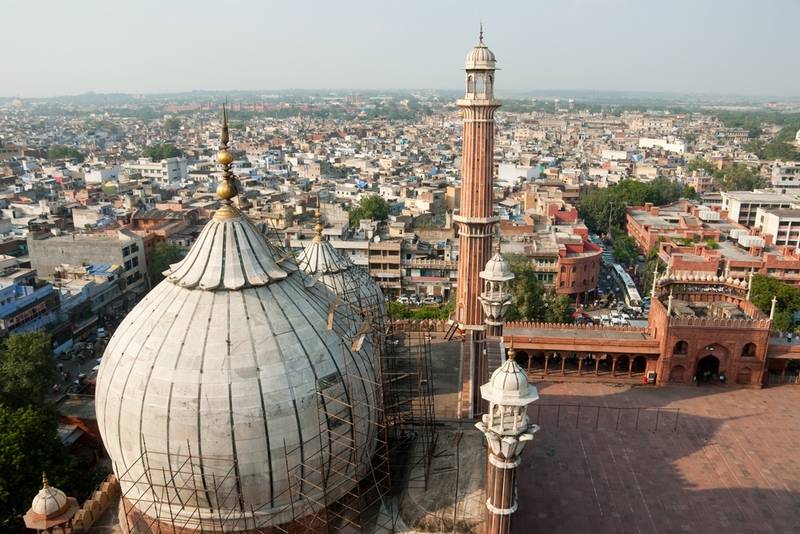 Jama Masjid mosque, built in 1656 by Mughal Emperor Shah Jahan. ajay-bhaskar/shutterstock |
Delhi, the bustling capital of India, is a city that encapsulates a fascinating blend of history, culture, and modernity. With its roots tracing back to ancient times, Delhi showcases an amalgamation of historical monuments, vibrant markets, and diverse neighborhoods. The city’s historical significance is evident in its impressive landmarks such as the Red Fort, Humayun’s Tomb, and Qutub Minar, each narrating tales from different epochs of Indian history. Alongside these cultural treasures, Delhi pulsates with a dynamic energy reflected in its contemporary lifestyle, burgeoning culinary scene, and thriving arts and entertainment. Divided into Old Delhi, known for its narrow alleys and historic sites, and New Delhi, characterized by wide avenues and government buildings, the city offers a fascinating tapestry of experiences for travelers and locals alike.
Kashmir

Gulmarg ski resort in Kashmir. anastasia-zolotar/shutterstock
Kashmir, often referred to as “Paradise on Earth,” is a region of breathtaking beauty nestled in the northernmost part of India. Its snow-capped peaks, lush valleys, serene lakes, and meandering rivers create a stunning landscape that captivates visitors. Renowned for its picturesque vistas, Kashmir boasts the majestic Himalayas, including the Pir Panjal range, offering mesmerizing views and thrilling opportunities for trekking and mountaineering enthusiasts. The region’s cultural richness is reflected in its warm hospitality, vibrant handicrafts like Pashmina shawls and exquisite Kashmiri cuisine, which includes delectable dishes like Rogan Josh and Wazwan. However, Kashmir has faced political complexities and intermittent unrest, which have impacted its tourism industry.
Kerala Backwaters

Houseboat in the Kerala backwaters, a network of 1500 km of canals, rivers and lakes. alexandra-lande/shutterstock
The Kerala backwaters are a mesmerizing network of interconnected rivers, lakes, canals, and lagoons that span across the coastal region of Kerala. Often hailed as the “Venice of the East,” this enchanting labyrinth of water bodies is a serene and idyllic retreat, showcasing a unique ecosystem and traditional way of life. Houseboats, locally known as Kettuvallams, meander through these tranquil waters, offering travelers a chance to immerse themselves in the natural beauty while experiencing the slow-paced rhythm of local life along the banks. The backwaters serve as a lifeline for the communities residing here, with villagers using these waterways for transportation, fishing, and agriculture.
Ladakh

Leh Palace in Ladakh. dchauy/shutterstock
Ladakh, perched high in the northernmost region of India, is a land of stark and breathtaking beauty. This remote Himalayan region, often called the “Land of High Passes,” captivates adventurers and nature enthusiasts alike with its awe-inspiring landscapes and unique cultural tapestry. Characterized by barren mountains, deep valleys, and clear azure skies, Ladakh offers a surreal panorama that seems almost otherworldly. Its ancient monasteries, such as Hemis and Thiksey, stand as spiritual havens amidst the dramatic terrain, while the shimmering lakes like Pangong Tso and Tso Moriri add a touch of serenity to the rugged landscape. The region’s cultural richness is showcased in its vibrant festivals, traditional architecture, and warm-hearted locals who uphold age-old traditions.
Ajanta Caves, Maharashtra
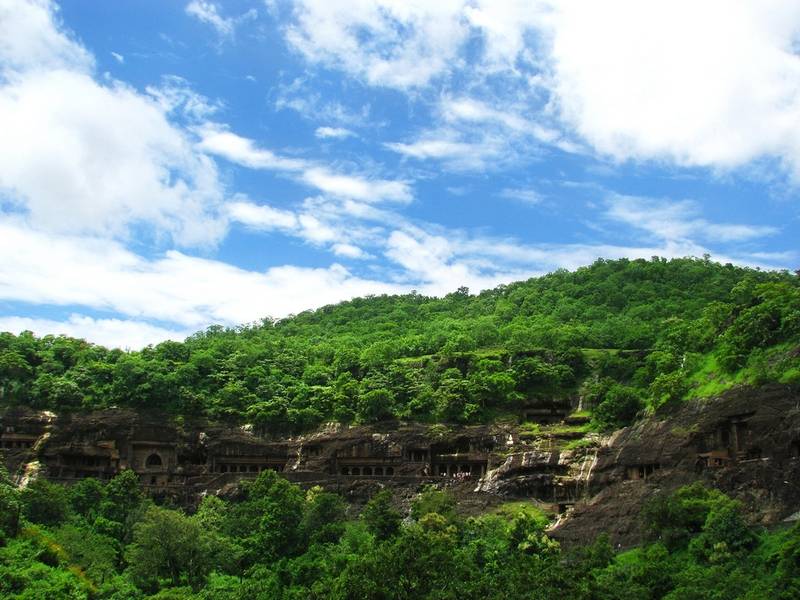 Ajanta Caves, a complex containing 300 rock cut caves dating from the 2nd century BC. nestor-noci/shutterstock |
The Ajanta Caves, nestled in the Aurangabad district of Maharashtra, stand as an ancient testament to exquisite craftsmanship and artistic brilliance. Carved into the rock face of a horseshoe-shaped gorge, these 30 Buddhist cave monuments, dating back to the 2nd century BCE, are a UNESCO World Heritage Site. Adorned with detailed paintings and sculptures, the Ajanta Caves represent a remarkable fusion of art, religion, and history. The stunning frescoes and sculptures within these caves depict tales from the life of Buddha, celestial beings, and everyday life in ancient India, showcasing the evolution of Indian artistry and cultural heritage.
Varanasi, Uttar Pradesh
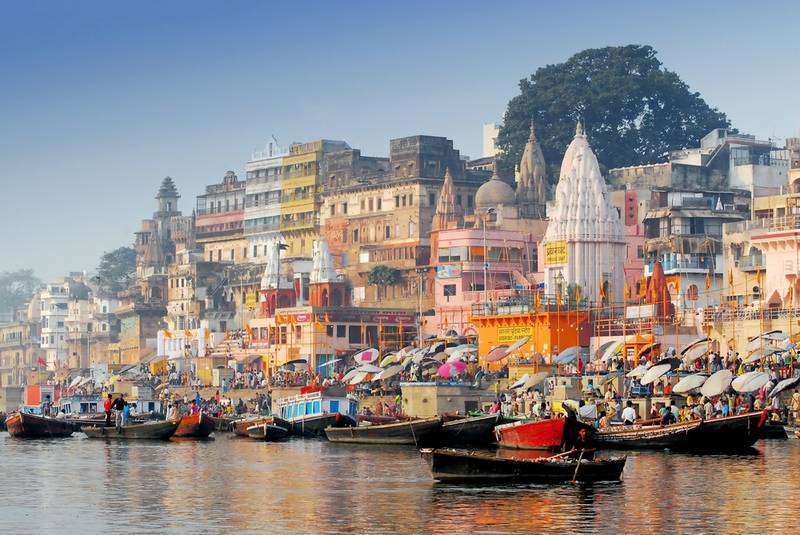 regien-paassen/shutterstock |
Varanasi, also known as Kashi, stands as one of the oldest continually inhabited cities in the world, exuding spirituality, mystique, and timeless charm along the banks of the sacred River Ganges in Uttar Pradesh. Revered as the spiritual heart of India, Varanasi holds profound religious significance for Hindus and is believed to be a place of salvation, where life and death coalesce in a continuous cycle. The city’s ancient ghats, such as Dashashwamedh and Manikarnika, are revered sites for religious rituals, pilgrimages, and the iconic Ganga Aarti, a ritualistic ceremony that unfolds every evening, igniting the riverfront with lamps, incense, and devotional hymns. Varanasi’s labyrinthine alleys, adorned with bustling markets and ancient temples like Kashi Vishwanath, offer a glimpse into the city’s rich cultural heritage, spiritual fervor, and the timeless traditions that have persisted for centuries.
Hampi, Karnataka
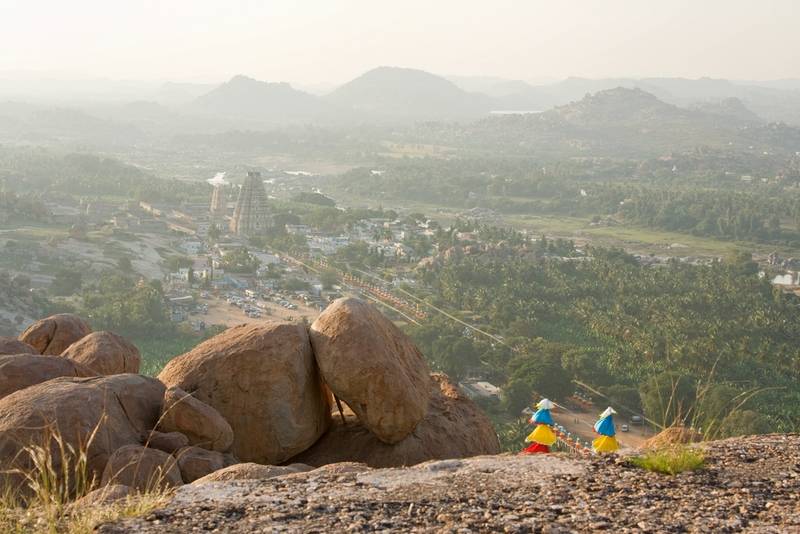 The temple of Virupaksha. inc/shutterstock |
Hampi, located in the southern state of Karnataka, is a UNESCO World Heritage Site that transports visitors to an ancient era of grandeur and architectural splendor. Once the capital of the mighty Vijayanagara Empire, Hampi is a sprawling complex of mesmerizing ruins, awe-inspiring temples, and rocky landscapes that create an ethereal atmosphere. The remnants of this erstwhile empire, scattered across a vast area, include impressive structures like the Virupaksha Temple, Vittala Temple with its iconic stone chariot, and the majestic Elephant Stables, each reflecting the rich architectural heritage and cultural legacy of the bygone era.
Victoria Memorial, Kolkata

Victoria Memorial Hall in Kolkata. Built in 1906 it incorporates a fusion of British and Mughal architecture. amit-bhawnani/shutterstock
Kolkata, the cultural capital of India, is a bustling metropolis steeped in history, literature, and artistry. The city, formerly known as Calcutta, is a vibrant blend of tradition and modernity, pulsating with a unique energy that captivates visitors. At its heart stands the iconic Victoria Memorial, an architectural masterpiece that pays homage to Queen Victoria’s reign. This majestic white marble monument, surrounded by lush gardens, serves as a symbol of Kolkata’s colonial past and showcases a blend of Indo-Saracenic and British architectural styles. Beyond this landmark, Kolkata enchants with its bustling streets, diverse culinary scene, thriving art galleries, and intellectual fervor. Home to renowned poets, writers, and artists, the city resonates with a rich cultural heritage, celebrated through its festivals, music, and theatrical performances.
Rajasthan
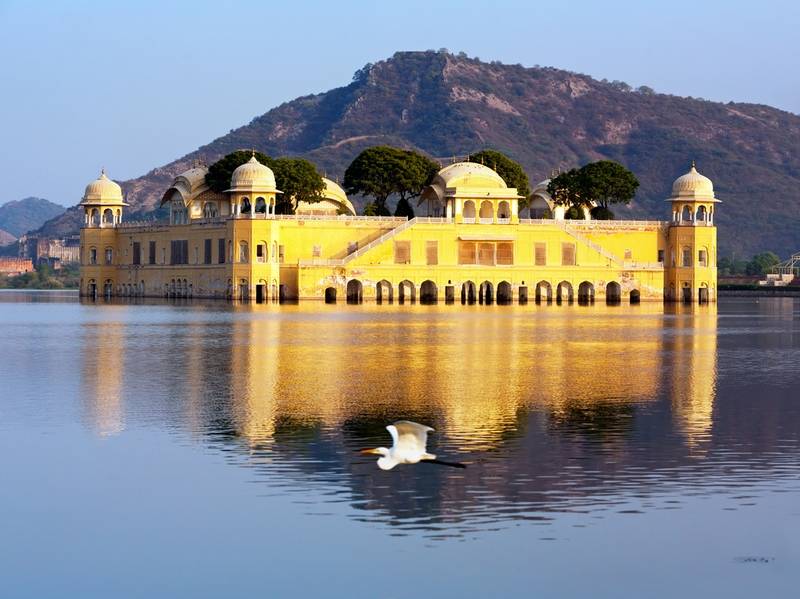 Jal Mahal water palace in Jaipur, the capital of Rajasthan. vladimir-sklyarov/shutterstock |
Rajasthan, the majestic desert state in northwestern India, evokes a sense of regal grandeur and timeless charm. Known as the “Land of Kings,” Rajasthan is a treasure trove of vibrant culture, magnificent palaces, imposing forts, and a rich tapestry of traditions. The state’s architectural wonders like the Mehrangarh Fort in Jodhpur, the intricate palaces of Udaipur, the iconic Hawa Mahal in Jaipur, and the stunning sandstone fort of Jaisalmer stand as testaments to its royal heritage. The colorful cities adorned with bustling markets, traditional arts, and vibrant festivals immerse visitors in the essence of Rajasthani culture. Beyond its architectural splendors, Rajasthan’s expansive Thar Desert offers a unique experience with camel safaris, folk music, and stargazing under the vast desert sky.
Goa

Palolem beach in Goa, a small state in western India famed for its beautiful beaches. It was ruled by the Portuguese for four and a half centuries until 1961. tommaso-lizzul/shutterstock
Goa, nestled along the Arabian Sea on the western coast of India, is a sun-soaked paradise renowned for its idyllic beaches, vibrant culture, and laid-back atmosphere. Often referred to as the “Pearl of the Orient,” Goa offers a unique blend of Portuguese heritage, evident in its colonial architecture, centuries-old churches, and flavorful cuisine fused with local spices. The palm-fringed shores, such as Baga, Calangute, and Palolem, beckon travelers with their golden sands, azure waters, and a plethora of water sports and beachside shacks offering delectable seafood. Beyond the coastline, Goa boasts a rich cultural scene with bustling markets, vibrant nightlife, and a calendar brimming with festivals, including the famous Carnival and New Year celebrations. The serene hinterlands showcase lush greenery, spice plantations, and the tranquility of rural Goa, providing a stark contrast to the lively beach vibe.
Rishikesh, Uttarakhand

Yoga practitioner in Rishikesh. darko-sikman/shutterstock
Rishikesh, nestled in the foothills of the Himalayas along the banks of the Ganges River in Uttarakhand, India, is a spiritual haven and an adventure seeker’s paradise. Revered as the “Yoga Capital of the World,” Rishikesh draws pilgrims, seekers of spiritual enlightenment, and travelers in search of tranquility. The town is adorned with numerous ashrams, yoga centers, and temples, offering spiritual teachings, meditation, and yoga practices. Additionally, Rishikesh is famous for its adventure sports like river rafting, trekking, bungee jumping, and camping, attracting adrenaline enthusiasts from around the globe. To reach Rishikesh, travelers often arrive via Haridwar, which is well-connected by train from major Indian cities like Delhi. From Haridwar, Rishikesh is just a short journey away by bus, taxi, or shared auto-rickshaw.
The Golden Temple, Amritsar

The Golden Temple, the holiest shrine in Sikhism and a major pilgrimage destination.
The Golden Temple, or Harmandir Sahib, stands as the spiritual and cultural nucleus of Sikhism, situated in the heart of Amritsar, Punjab. Adorned with stunning gold-plated domes that shimmer in the sunlight, this sacred shrine is a symbol of devotion, peace, and inclusivity. Surrounded by the tranquil waters of the Amrit Sarovar (Pool of Nectar), the temple exudes a sense of serenity and welcomes devotees and visitors from all walks of life. The Guru Granth Sahib, the holy scripture of Sikhism, is enshrined within its sanctum sanctorum, and the Langar (community kitchen) serves free meals to thousands daily, reflecting the core Sikh values of equality and service.
Khajuraho Group of Monuments, Madhya Pradesh
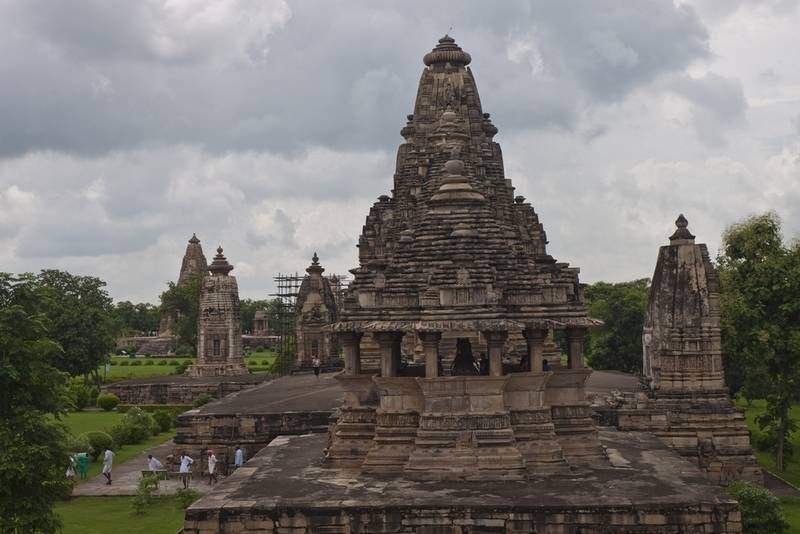 Temples in Khajuraho, a small town in Madhya Pradesh. It contains many groups of Hindu and Jain temples. m.r./shutterstock |
The Khajuraho Group of Monuments, located in the heart of India in Madhya Pradesh, stands as a UNESCO World Heritage Site renowned for its stunning and intricate temple architecture. Dating back to the Chandela dynasty between the 9th and 11th centuries, these temples boast exquisite and ornately carved sculptures that depict various facets of life, including celestial beings, gods, goddesses, musicians, dancers, and intimate human relationships. These intricate carvings, showcasing exceptional craftsmanship and remarkable attention to detail, adorn the walls of temples like Kandariya Mahadeva, Lakshmana, and Vishvanatha, among others.
Kanha National Park, Madhya Pradesh

Bengal tiger in Kanha National Park. mogens-trolle/shutterstock
Located in the state of Madhya Pradesh, Kanha National Park stands as a prominent wildlife sanctuary renowned for its diverse flora and fauna, particularly known for its tiger population and conservation efforts. To reach Kanha National Park, visitors often travel to Jabalpur, which is the nearest major city and has good connectivity via air, rail, and road. From Jabalpur, it’s approximately a 4-5 hours’ drive to the park’s entrance. Another common route is from Nagpur, Maharashtra, which is around 5-6 hours away by road. Upon entering the park, visitors can explore its rich biodiversity through guided safaris, spotting not only tigers but also various species of deer, leopards, sloth bears, and an abundance of birdlife.
Mumbai

The Taj Mahal Palace Hotel in Mumbai. alexandra-lande
Mumbai, the bustling metropolis on the western coast of India, is a vibrant tapestry of diversity, dreams, and dynamic energy. Known as the financial, commercial, and entertainment capital of the country, Mumbai is a city that never sleeps. Its iconic skyline, adorned with towering skyscrapers juxtaposed with colonial-era architecture, reflects its rich historical and contemporary significance. Home to the Bollywood film industry, Mumbai pulsates with a cultural vibrancy that is reflected in its bustling markets, vibrant street food scene, art galleries, and thriving theater and music culture. The city’s coastal charm, epitomized by the iconic Marine Drive and the Gateway of India, adds to its allure, offering both locals and visitors a breathtaking view of the Arabian Sea.




